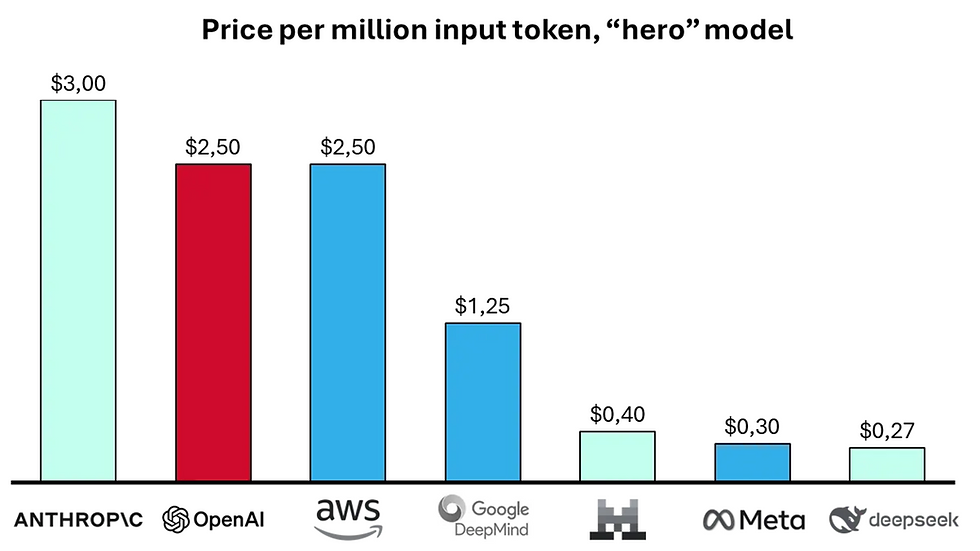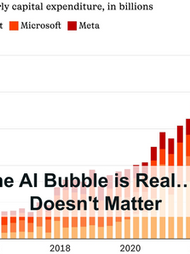3 Quick lessons for AI transformation
- Adrien Book

- Aug 10, 2020
- 7 min read
Updated: Feb 23, 2021
A million pompous Tweets, a thousand pontifical TedX videos and hundreds of unnecessary hot takes don't lie : Artificial Intelligence (AI) is here, and it's here to stay. Ok. Good. What now? Well, before AI can truly be called a democratised technology, we have to go beyond Silicon Valley startups and implement it within small/medium businesses and governments to reap the rewards promised by AI transformation.
And so we must ask ourselves : how does a non-tech company go about this? What are the pitfalls to avoid? Where to begin? Below are a few lessons I've learned throughout my time as a technology consultant for some of Europe's largest companies. This is meant as an introduction to AI project management; a more complete look can be found in this article : 10 Steps to your very own Corporate Artificial Intelligence project.
1. Identify and remove small(er) obstacles
Companies have lost years of progress to false issues and silly excuses, and continue to do so today. Before starting any AI project, some housekeeping is necessary to make sure that none of the issues highlighted below will be used as excuses to slow the project down. Write the answer to these questions in your project manifesto, and watch all the politically-driven push-back just melt away.
How will we ensure user adoption?
This should not be an issue for most companies : most AI projects are not made to scale at this point in time. They are often just proofs of concepts (POCs), or answer a very specific pain points, with few users affected. If, tomorrow, an AI solution is scaled throughout an entire organisation, it will simply have to be co-built with the end users and stakeholders. Using an agile methodology, it is then possible to ensure all stakeholders are happy with the solution.
Isn’t the quality of our data too poor for this type of project?
Yes. Yes it is. There is no such thing as perfect data, even within the tech giants of this world. But you’ve got to start somewhere. And that somewhere is benchmarking the quality of the existing data in relation to a concrete purpose or pre-defined use case. Only then will an improvement plan start to emerge, which can be implemented step by step with the relevant management support. Running around trying to fix all data issues will only lead to a waste of energy and resources.
Are our business and IT staff too distant from one another?
The answer is most often yes, these two core teams often do not communicate enough, and seldom share the same goals. This can cause rifts within the organisation : operational teams may want to increase productivity, while IT teams are likely to pursue cyber safety and cost-saving options. There is however no point in trying to artificially link them without first having a clear purpose. Once a goal is set, a few people from each team might meet regularly to exchange on a common strategy to ensure that no part of the organisation feels left out of an AI transformation. They would then report back and guarantee that the decisions are implemented within each team as previously specified and planned.
Are our data management processes adapted to our need?
Beware of artificial and “above-ground” governance : it’s all too easy to define a governance structure before the project is even started, and then trying to adapt the project to said governance. This would be like writing a recipe with no cooking experience. Governance must be a consequence of the implementation of a AI use case and not its prerequisite.
Do we lack the relevant AI skills within our organisation?
There are currently only 22,000 PhD-level experts worldwide capable of developing cutting edge algorithms. And many of them work for the the big tech companies (you know the ones I’m talking about). It will be incredibly hard (and expensive) for an SME to hire one of them. The good news is that it is not necessary. Most projects are not trying to push the border of our AI knowledge, but use what already exists (and has existed since the 1960s). As such, the skills that an executive team might think is missing is likely to be very different from the ones actually needed for a small AI project. What truly matters nowadays is business commitment, algorithm robustness and the informatics systems’ architectures.
Is our company suffering from an insufficient top management data culture?
CxOs are famously busy people, and rarely have the time to sit through lecture after lecture on a particular topic. This is why corporate teams are very fond of “learning expeditions” : it places them in a new environment where they’re forced to listen to experts on the matter, and gets them away from their partners and kids for a few days.
As much as I like organising learning expeditions, I’ve always been skeptical about their effectiveness, beyond that of a free vacation for the executive team. Instead, I’m a proponent for planning ahead and hiring or promoting executives based not only on their merits in their respective fields, but also based on their data-management knowledge and/or curiosity for the matter.
2. Avoid the real pitfalls
Once easy questions are answered, we must move on to the real challenges of AI transformation, of which there are many.
Prefer “Business Pull” to “Techno Push”
Technology is fantastic and exciting. It also often fails to provide real customer value (when was the last you used Bitcoins?). This is why it’s important to keep focusing on the “business pull” rather than the “techno push” : seemingly brilliant solutions sometimes (often) come to the wrong place, at the wrong time. During any AI project, it’s important not to lose track of why the project was created, and for whom.
Invest in the “boring” stuff
While the uninformed masses run around discussing innovative start-ups, data science, POCs, deep learning, Elon Musk…, experts are keen to talk about the darker side of AI projects : data quality, engineering, architecture, HR & business model transformation. Those aspects of a project are all-too-often under-appreciated and undervalued, yet they are at the very center of a positive AI transformation. Remember : AI is supposed to be boring; it's just statistics, and statistics are the worst.
Do not make false promises
It’s very easy to get over-excited at the beginning of an AI project. We hear words like big data, data-centricity, DQM, no-code, RPA… and believe we can tame these concepts to bring value to the entire corporation and finally get that well-deserved promotion. But beware : all of these ideas have generated tremendous disappointments in the past, and could put the entire project are risk if thrown around carelessly. Steering clear of over-selling is often the key to a successful project.
Be realistic on skills
I’ve been told that 75% of a dev’s job is based on Googling abilities. That sounds about right. The same goes for data scientists : they will not be fully operational on day 1, as every AI project is unique. As such, it is important to show patience and provide relevant training during the first few months of the project. This is also why it is paramount not to over-sell a project that hasn’t begun : it’s difficult to figure out what we don’t know from a project brief only.
Don’t copy Google
Or any best-in-class AI company for that matter. Copying the tech giants is a fool’s errand that will yield virtually no success. Words can hardly describe how good they are at what they do, and how much it cost them to get there (with a little help from inefficient anti-trust laws). Every company, however, has unique assets which it can use to make a unique algorithm that will specifically fit its needs.
3. Start with the beginning
It may be hard to believe after reading all of the above, but far too many projects will want to "hit the ground running". Data scientists then start the design process mid-sprint (see what I did there?), without taking the time to understand the who, the what, the why and the how. Management is then surprised that they got a skateboard instead of a scooter. Let me be clear, if not a little condescending : starting with the beginning is however necessary to get to the end.
Define AI ambition
As mentioned above, it is important to take the time to answer a few key questions. The most important of these questions (as always) is “why”. Why does the company want to invest in AI, and what are its goals for its AI projects? Regardless of their coding or data analysis abilities, the people at the top have a key role to play in defining the strategy for an AI project. Without being given precise directions, teams will be left to aimlessly dig through data, looking for a story. And with no clear and agreed-upon goal, they’ll be left chasing a moving target, running the risk of rewriting history as new data comes in. That’s why the strategy defined BEFORE any project kick-off should be Specific, Measurable, Attainable, Relevant, and Time-bound.
“Everyone else is doing it” is a terrible reason to get into the A.I game.
Define priority use cases
Once the ambition is defined, it becomes a lot easier to identify use cases. All the ideas and user stories that came during the previous step should be defined and objectively prioritised in accordance to how well they serve the company’s overall goals. Grading categories might include :
Data availability
Data exclusivity
Technical complexity
Team maturity
…
A “Smart Lab” roadmap can then be created from this priorisation (assuming the goal of the AI project is to create more AI project babies).
Gradually industrialize (“AI at scale”)
Gradually/slowly industrialize the project throughout the organisation according to the results of smart labs' POCs. It’s important to consider several dimensions in the industrialization phase:
Data collection / sourcing, quality, integrity
"Make or buy" AI solutions
Adaptation of the IS architecture
Adaptation of business processes and change management with trades.
This may be the end of the article, but you're not ready to tun your own AI project just yet. As mentioned above, this article is but an introduction to the matter. If it peaked your curiosity may I advise these two articles that go deeper into the matter :
Good luck out there.



























google seo google seo技术飞机TG-cheng716051;
03topgame 03topgame
Jogos JOGOS
Fortune Tiger Fortune Tiger;
Fortune Tiger Slots Fortune Tiger…
Fortune Tiger Fortune Tiger;
EPS машины EPS машины;
Fortune Tiger Fortune Tiger;
EPS Machine EPS Cutting Machine;
EPS Machine EPS and EPP…
EPP Machine EPP Shape Moulding…
EPS Machine EPS and EPP…
EPTU Machine ETPU Moulding Machine
EPS Machine EPS Cutting Machine;
EPTU Machine ETPU Moulding…
EPTU Machine ETPU Moulding…
EPTU Machine ETPU Moulding…
EPTU Machine ETPU Moulding…
EPTU Machine ETPU Moulding…
EPS Machine EPS Block…
EPS Machine EPS Block…
EPS Machine EPS Block…
AEON MINING AEON MINING
AEON MINING AEON MINING
KSD Miner KSD Miner
KSD Miner KSD Miner
BCH Miner BCH Miner
BCH Miner BCH Miner